Do you have a question about the Hyundai Tucson 2017 and is the answer not in the manual?
Detailed view of the vehicle's exterior front features, including panorama sunroof, windshield wipers, and headlamps.
Detailed view of the vehicle's exterior rear features, including antenna, defroster, and tailgate.
Overview of the vehicle's interior controls and features, including door locks, power windows, and steering wheel components.
Identification and function of controls on the vehicle's instrument panel, including light controls and audio systems.
Identification and function of additional controls on the vehicle's instrument panel, including power outlets and drive mode buttons.
Identification of major components in the engine compartment for gasoline and diesel engines.
Essential safety recommendations for operating the vehicle, including seat belt use and driver distraction.
Instructions on adjusting front and rear seats, including safety precautions and features like seat warmers.
Guidance on proper seat belt usage, safety precautions, and restraint systems.
Information on child safety in vehicles, including CRS selection, installation, and warnings.
Details on the Supplemental Air Bag System, including locations, safety precautions, and operation.
Explanation of the active hood lift system's operation and activation/non-activation situations.
Instructions on using the remote key and smart key for vehicle access and starting.
Details on operating door locks from outside and inside the vehicle using mechanical keys or remote systems.
Information on the vehicle's theft alarm system, its operation, and security features.
Explanation of the electric power steering system, its operation, and steering wheel controls.
Instructions for adjusting rearview mirrors, including day/night and electric chromic mirror functions.
Details on power windows operation, including opening, closing, auto up/down, and lock functions.
Instructions for operating the panorama sunroof, including sliding, tilting, and safety precautions.
Procedures for opening and closing the vehicle's hood, including safety warnings.
Instructions for opening and closing the fuel filler door, including precautions for cold weather.
Information on operating the non-power and power tailgate, including safety warnings.
Details on using the smart tailgate system for hands-free opening, including operating conditions and warnings.
Overview of the instrument cluster for gasoline and diesel engines, including gauges and displays.
Explanation of LCD display modes, controls, and settings, including trip computer and user settings.
Description of various warning messages displayed on the vehicle's system, including key and brake warnings.
Overview of the vehicle's multimedia system, including audio, USB, and Bluetooth® features.
Information on connecting external audio devices via AUX, USB, and iPod® ports.
Details on the roof and shark fin antennas, including installation and care instructions.
Explanation of steering wheel controls for audio system functions like volume, seek, and mode selection.
Information on the AVN system, audio settings, and Bluetooth® hands-free functionality.
Guide to using Bluetooth® for wireless phone calls, including pairing and connection procedures.
Explanation of how AM and FM radio signals are processed by the vehicle's audio system.
Precautions for using cellular phones and two-way radios inside the vehicle to avoid noise interference.
Guidelines for using USB devices with the multimedia system, including connection and format compatibility.
Instructions for using iPod® devices with the vehicle audio system, including connection and playback.
Guidelines for using external audio devices connected via the AUX terminal.
Essential information and precautions before using the Bluetooth® handsfree feature.
Safety guidelines related to using Bluetooth® handsfree features while driving.
Steps and considerations for connecting a Bluetooth® phone to the vehicle's audio system.
Instructions and best practices for using the vehicle's voice recognition system.
Detailed description of audio system controls and functions, including knobs and buttons.
Guide to setting up the vehicle's display and audio system preferences, including mode pop-up and song info.
Instructions for adjusting audio settings, including bass, treble, balance, and speed-dependent volume.
Procedure for setting the vehicle's time using the audio system's clock settings.
Procedure for setting the vehicle's date using the audio system's day settings.
Instructions for setting the 12/24 hour time format for the audio system.
Option to automatically set the time by synchronizing with RDS data.
Configuration options for Bluetooth® phone connectivity, including pairing and connection.
Instructions for deleting phone entries, contacts, or files from the system.
Feature to download phone book and call histories into the audio system.
Option to automatically download new phone book and call histories when connecting a mobile phone.
Guide to operating the Bluetooth® Wireless Technology system for handsfree calls.
Steps to start Bluetooth® audio streaming from a connected mobile phone.
Setting the volume of your voice as heard by the other party during handsfree calls.
Procedure to turn off the Bluetooth® Wireless Technology system when not in use.
Instructions for using the voice recognition system, including starting, commands, and best practices.
Visual guide to using voice commands for various vehicle functions like mode selection and skipping prompts.
List of common voice commands for system operations and specific functions like radio and phone.
Voice commands for controlling FM/AM radio functions like preset selection and scanning.
Voice commands available for controlling USB playback, including scan and folder search.
Commands for controlling iPod® playback, including random, repeat, and delete functions.
Commands for managing and playing music stored in the My Music feature.
Commands for controlling Bluetooth® audio streaming from a mobile phone.
Essential checks and precautions before starting the vehicle, including windows, lights, and tires.
Explanation of the key ignition switch positions (LOCK, ACC, ON, START) and associated warnings.
Step-by-step instructions for starting the gasoline and diesel engines, including safety precautions.
Instructions for operating the manual transaxle, including shifting, clutch use, and downshifting.
Explanation of automatic transaxle operation, including gear positions and sports mode.
Details on dual clutch transmission operation, including its unique characteristics and driving feel.
Information on power brakes, disc brakes, parking brake, and electronic parking brake systems.
Explanation of the 4WD system, its operation modes, and precautions for off-road driving.
Guidelines for driving in hazardous conditions such as water, snow, ice, mud, sand, and steep hills.
Recommendations for winter driving, including snow/icy conditions, snow tires, and emergency equipment.
Important tips and safety rules for towing trailers, including legal requirements and equipment.
Explanation of vehicle weight ratings (GVWR, GAWR) and precautions against overloading.
Instructions for operating the cruise control and speed limit control systems.
Instructions on using the hazard warning flasher for emergency signaling and visibility.
Troubleshooting steps for when the engine does not start, including checking the fuel and battery.
Procedure for responding to engine overheating, including checking coolant and safety precautions.
Information on the TPMS, including checking tire pressure and interpreting warning lights.
Steps for changing a tire with a vehicle equipped with TPMS, including precautions.
Instructions for changing a flat tire using the spare tire, including jack and tool usage.
Guide to using the Tire Mobility Kit for temporary tire repair, including safety and component information.
Information on vehicle towing procedures, including safety precautions for 4WD and 2WD vehicles.
Details on emergency equipment provided with the vehicle, such as fire extinguisher and first aid kit.
Explanation of the ERA-GLONASS system for making emergency calls after an accident.
Description of the automatic accident reporting feature and its operation.
Instructions for manually making an emergency call using the SOS button.
Identification of components in the engine compartment for various gasoline and diesel engine models.
Information on the owner's responsibility for maintaining service records and understanding warranty requirements.
General guidelines and precautions for performing owner maintenance on the vehicle.
Overview of normal and severe usage maintenance schedules based on driving conditions.
Detailed explanation of items covered in the scheduled maintenance, including engine oil, drive belts, and fuel filter.
Instructions for checking engine oil level and replacing the oil and filter, including warnings.
Information on engine coolant, including checking the level and changing the coolant.
Instructions for checking and filling the washer fluid reservoir, including warnings.
Procedure for checking the parking brake stroke and its proper function.
Instructions for draining water from the fuel filter and replacing the fuel filter cartridge.
Guide to replacing the air cleaner filter, including inspection and cleaning procedures.
Instructions for inspecting and replacing the climate control air filter.
Information on inspecting and replacing windshield wiper blades.
Guidelines for best battery service, including mounting, cleaning, and recharging precautions.
Information on tire care, recommended inflation pressures, rotation, and replacement.
Explanation of the vehicle's fuse system, including fuse panel descriptions and replacement procedures.
Instructions for replacing various vehicle light bulbs, including headlamps and interior lights.
Technical specifications for the vehicle's dimensions, including length, width, height, and tread.
Engine specifications, including displacement, bore, stroke, firing order, and number of cylinders.
Information on gross vehicle weight ratings (GVWR) and axle weight ratings (GAWR) for the vehicle.
Specifications for the vehicle's luggage volume in different configurations (MIN/MAX).
Recommended lubricants and fluids for the vehicle's engine, transaxle, and other systems.
Location and explanation of the vehicle identification number (VIN).
Information on the vehicle certification label, including VIN and compliance details.
Details on tire specifications, pressure recommendations, and location of the tire label.
Location of the engine number stamped on the engine block.
Information provided on the air conditioner compressor label.
Information on refrigerant type and amount located on the underside of the hood.
Details on radio frequency components compliance with relevant EU directives.
Index entries starting with the letter A, covering vehicle features and systems.
Index entries starting with the letter B, covering vehicle features and systems.
Index entries starting with the letter C, covering vehicle features and systems.
Index entries starting with the letter D, covering vehicle features and systems.
Index entries starting with the letter E, covering vehicle features and systems.
Index entries starting with the letter F, covering vehicle features and systems.
Index entries starting with the letter G, covering vehicle features and systems.
Index entries starting with the letter H, covering vehicle features and systems.
Index entries starting with the letter I, covering vehicle features and systems.
Index entries starting with the letter J, covering vehicle features and systems.
Index entries starting with the letter K, covering vehicle features and systems.
Index entries starting with the letter L, covering vehicle features and systems.
Index entries starting with the letter M, covering vehicle features and systems.
Index entries starting with the letter N, covering vehicle features and systems.
Index entries starting with the letter O, covering vehicle features and systems.
Index entries starting with the letter P, covering vehicle features and systems.
Index entries starting with the letter R, covering vehicle features and systems.
Index entries starting with the letter S, covering vehicle features and systems.
Index entries starting with the letter T, covering vehicle features and systems.
Index entries starting with the letter U, covering vehicle features and systems.
Index entries starting with the letter V, covering vehicle features and systems.
Index entries starting with the letter W, covering vehicle features and systems.
Detailed view of the vehicle's exterior front features, including panorama sunroof, windshield wipers, and headlamps.
Detailed view of the vehicle's exterior rear features, including antenna, defroster, and tailgate.
Overview of the vehicle's interior controls and features, including door locks, power windows, and steering wheel components.
Identification and function of controls on the vehicle's instrument panel, including light controls and audio systems.
Identification and function of additional controls on the vehicle's instrument panel, including power outlets and drive mode buttons.
Identification of major components in the engine compartment for gasoline and diesel engines.
Essential safety recommendations for operating the vehicle, including seat belt use and driver distraction.
Instructions on adjusting front and rear seats, including safety precautions and features like seat warmers.
Guidance on proper seat belt usage, safety precautions, and restraint systems.
Information on child safety in vehicles, including CRS selection, installation, and warnings.
Details on the Supplemental Air Bag System, including locations, safety precautions, and operation.
Explanation of the active hood lift system's operation and activation/non-activation situations.
Instructions on using the remote key and smart key for vehicle access and starting.
Details on operating door locks from outside and inside the vehicle using mechanical keys or remote systems.
Information on the vehicle's theft alarm system, its operation, and security features.
Explanation of the electric power steering system, its operation, and steering wheel controls.
Instructions for adjusting rearview mirrors, including day/night and electric chromic mirror functions.
Details on power windows operation, including opening, closing, auto up/down, and lock functions.
Instructions for operating the panorama sunroof, including sliding, tilting, and safety precautions.
Procedures for opening and closing the vehicle's hood, including safety warnings.
Instructions for opening and closing the fuel filler door, including precautions for cold weather.
Information on operating the non-power and power tailgate, including safety warnings.
Details on using the smart tailgate system for hands-free opening, including operating conditions and warnings.
Overview of the instrument cluster for gasoline and diesel engines, including gauges and displays.
Explanation of LCD display modes, controls, and settings, including trip computer and user settings.
Description of various warning messages displayed on the vehicle's system, including key and brake warnings.
Overview of the vehicle's multimedia system, including audio, USB, and Bluetooth® features.
Information on connecting external audio devices via AUX, USB, and iPod® ports.
Details on the roof and shark fin antennas, including installation and care instructions.
Explanation of steering wheel controls for audio system functions like volume, seek, and mode selection.
Information on the AVN system, audio settings, and Bluetooth® hands-free functionality.
Guide to using Bluetooth® for wireless phone calls, including pairing and connection procedures.
Explanation of how AM and FM radio signals are processed by the vehicle's audio system.
Precautions for using cellular phones and two-way radios inside the vehicle to avoid noise interference.
Guidelines for using USB devices with the multimedia system, including connection and format compatibility.
Instructions for using iPod® devices with the vehicle audio system, including connection and playback.
Guidelines for using external audio devices connected via the AUX terminal.
Essential information and precautions before using the Bluetooth® handsfree feature.
Safety guidelines related to using Bluetooth® handsfree features while driving.
Steps and considerations for connecting a Bluetooth® phone to the vehicle's audio system.
Instructions and best practices for using the vehicle's voice recognition system.
Detailed description of audio system controls and functions, including knobs and buttons.
Guide to setting up the vehicle's display and audio system preferences, including mode pop-up and song info.
Instructions for adjusting audio settings, including bass, treble, balance, and speed-dependent volume.
Procedure for setting the vehicle's time using the audio system's clock settings.
Procedure for setting the vehicle's date using the audio system's day settings.
Instructions for setting the 12/24 hour time format for the audio system.
Option to automatically set the time by synchronizing with RDS data.
Configuration options for Bluetooth® phone connectivity, including pairing and connection.
Instructions for deleting phone entries, contacts, or files from the system.
Feature to download phone book and call histories into the audio system.
Option to automatically download new phone book and call histories when connecting a mobile phone.
Guide to operating the Bluetooth® Wireless Technology system for handsfree calls.
Steps to start Bluetooth® audio streaming from a connected mobile phone.
Setting the volume of your voice as heard by the other party during handsfree calls.
Procedure to turn off the Bluetooth® Wireless Technology system when not in use.
Instructions for using the voice recognition system, including starting, commands, and best practices.
Visual guide to using voice commands for various vehicle functions like mode selection and skipping prompts.
List of common voice commands for system operations and specific functions like radio and phone.
Voice commands for controlling FM/AM radio functions like preset selection and scanning.
Voice commands available for controlling USB playback, including scan and folder search.
Commands for controlling iPod® playback, including random, repeat, and delete functions.
Commands for managing and playing music stored in the My Music feature.
Commands for controlling Bluetooth® audio streaming from a mobile phone.
Essential checks and precautions before starting the vehicle, including windows, lights, and tires.
Explanation of the key ignition switch positions (LOCK, ACC, ON, START) and associated warnings.
Step-by-step instructions for starting the gasoline and diesel engines, including safety precautions.
Instructions for operating the manual transaxle, including shifting, clutch use, and downshifting.
Explanation of automatic transaxle operation, including gear positions and sports mode.
Details on dual clutch transmission operation, including its unique characteristics and driving feel.
Information on power brakes, disc brakes, parking brake, and electronic parking brake systems.
Explanation of the 4WD system, its operation modes, and precautions for off-road driving.
Guidelines for driving in hazardous conditions such as water, snow, ice, mud, sand, and steep hills.
Recommendations for winter driving, including snow/icy conditions, snow tires, and emergency equipment.
Important tips and safety rules for towing trailers, including legal requirements and equipment.
Explanation of vehicle weight ratings (GVWR, GAWR) and precautions against overloading.
Instructions for operating the cruise control and speed limit control systems.
Instructions on using the hazard warning flasher for emergency signaling and visibility.
Troubleshooting steps for when the engine does not start, including checking the fuel and battery.
Procedure for responding to engine overheating, including checking coolant and safety precautions.
Information on the TPMS, including checking tire pressure and interpreting warning lights.
Steps for changing a tire with a vehicle equipped with TPMS, including precautions.
Instructions for changing a flat tire using the spare tire, including jack and tool usage.
Guide to using the Tire Mobility Kit for temporary tire repair, including safety and component information.
Information on vehicle towing procedures, including safety precautions for 4WD and 2WD vehicles.
Details on emergency equipment provided with the vehicle, such as fire extinguisher and first aid kit.
Explanation of the ERA-GLONASS system for making emergency calls after an accident.
Description of the automatic accident reporting feature and its operation.
Instructions for manually making an emergency call using the SOS button.
Identification of components in the engine compartment for various gasoline and diesel engine models.
Information on the owner's responsibility for maintaining service records and understanding warranty requirements.
General guidelines and precautions for performing owner maintenance on the vehicle.
Overview of normal and severe usage maintenance schedules based on driving conditions.
Detailed explanation of items covered in the scheduled maintenance, including engine oil, drive belts, and fuel filter.
Instructions for checking engine oil level and replacing the oil and filter, including warnings.
Information on engine coolant, including checking the level and changing the coolant.
Instructions for checking and filling the washer fluid reservoir, including warnings.
Procedure for checking the parking brake stroke and its proper function.
Instructions for draining water from the fuel filter and replacing the fuel filter cartridge.
Guide to replacing the air cleaner filter, including inspection and cleaning procedures.
Instructions for inspecting and replacing the climate control air filter.
Information on inspecting and replacing windshield wiper blades.
Guidelines for best battery service, including mounting, cleaning, and recharging precautions.
Information on tire care, recommended inflation pressures, rotation, and replacement.
Explanation of the vehicle's fuse system, including fuse panel descriptions and replacement procedures.
Instructions for replacing various vehicle light bulbs, including headlamps and interior lights.
Technical specifications for the vehicle's dimensions, including length, width, height, and tread.
Engine specifications, including displacement, bore, stroke, firing order, and number of cylinders.
Information on gross vehicle weight ratings (GVWR) and axle weight ratings (GAWR) for the vehicle.
Specifications for the vehicle's luggage volume in different configurations (MIN/MAX).
Recommended lubricants and fluids for the vehicle's engine, transaxle, and other systems.
Location and explanation of the vehicle identification number (VIN).
Information on the vehicle certification label, including VIN and compliance details.
Details on tire specifications, pressure recommendations, and location of the tire label.
Location of the engine number stamped on the engine block.
Information provided on the air conditioner compressor label.
Information on refrigerant type and amount located on the underside of the hood.
Details on radio frequency components compliance with relevant EU directives.
Index entries starting with the letter A, covering vehicle features and systems.
Index entries starting with the letter B, covering vehicle features and systems.
Index entries starting with the letter C, covering vehicle features and systems.
Index entries starting with the letter D, covering vehicle features and systems.
Index entries starting with the letter E, covering vehicle features and systems.
Index entries starting with the letter F, covering vehicle features and systems.
Index entries starting with the letter G, covering vehicle features and systems.
Index entries starting with the letter H, covering vehicle features and systems.
Index entries starting with the letter I, covering vehicle features and systems.
Index entries starting with the letter J, covering vehicle features and systems.
Index entries starting with the letter K, covering vehicle features and systems.
Index entries starting with the letter L, covering vehicle features and systems.
Index entries starting with the letter M, covering vehicle features and systems.
Index entries starting with the letter N, covering vehicle features and systems.
Index entries starting with the letter O, covering vehicle features and systems.
Index entries starting with the letter P, covering vehicle features and systems.
Index entries starting with the letter R, covering vehicle features and systems.
Index entries starting with the letter S, covering vehicle features and systems.
Index entries starting with the letter T, covering vehicle features and systems.
Index entries starting with the letter U, covering vehicle features and systems.
Index entries starting with the letter V, covering vehicle features and systems.
Index entries starting with the letter W, covering vehicle features and systems.
| Brand | Hyundai |
|---|---|
| Model | Tucson 2017 |
| Category | Automobile |
| Language | English |
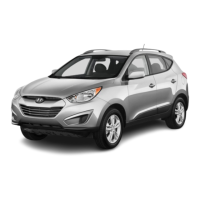

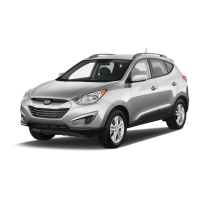
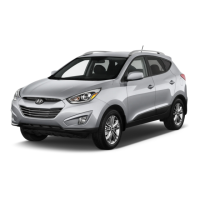


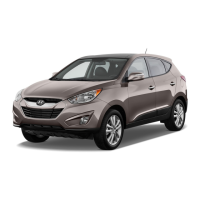



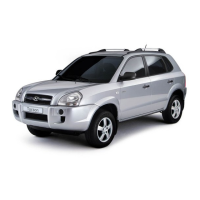

